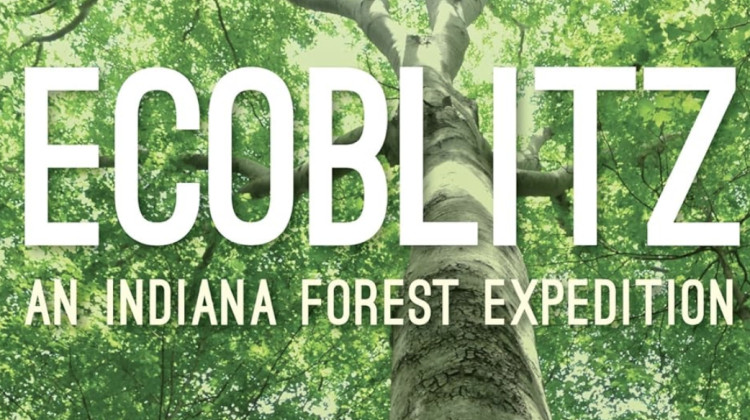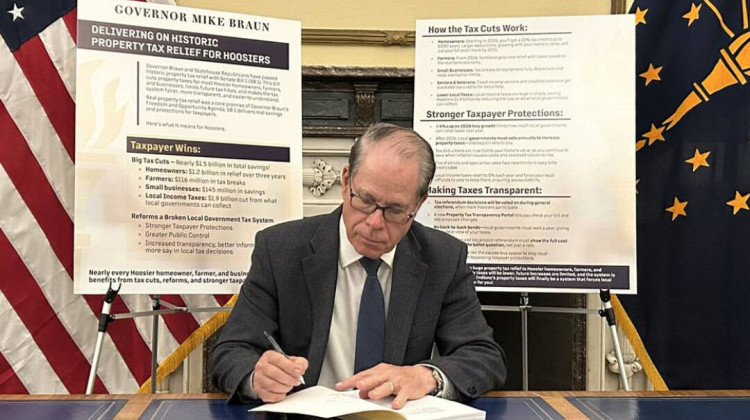
The Indiana Forest Alliance would like to see the two state forest areas designated as a type of High Conservation Value Forest — which would allow for more old growth trees.
Courtesy of the Indiana Forest AllianceScientists spent more than a decade cataloging species of plants and animals in the Morgan-Monroe State Forest and the Yellowwood State Forest backcountry area. Now the Indiana Forest Alliance has produced a book following those scientists’ journey called “EcoBlitz.”
Paul Rothrock, retired Indiana University biology professor, was one of those scientists — responsible for doing an inventory of plant species. He said he was surprised by the diversity of species in the area.
“There are more salamander species in that area than in a similar size area in the Amazon basin. About one-quarter of the species of spiders that were found in that area had not been reported before for Indiana. Within the fungal group, there were 74 species that were identified using DNA sequencing, but about half of those were not currently known within the DNA database," Rothrock said. "So, by way of saying, we have many things that are just even unknown — even to this day — in areas such as Indiana, which is a very well-known part of the temperate zone."
The Indiana Forest Alliance would like to see the two state forest areas designated as a type of High Conservation Value Forest — which would allow for more old growth trees.
The Indiana Department of Natural Resources reviewed the Forest Alliance's petition and said there’s already less tree cutting and other active management in backcountry areas and that state properties nearby have similar species.
READ MORE: Survey: Indiana approaches forestry like other professionals in North America.
Join the conversation and sign up for the Indiana Two-Way. Text "Indiana" to 765-275-1120. Your comments and questions in response to our weekly text help us find the answers you need on climate solutions and climate change at ipbs.org/climatequestions.
Indiana State Forester John Seifert said about 70 percent of the land the DNR manages is already old growth forest or will be soon in the future — and having tree stands of different ages is important.
“There are so many species — both flora and fauna — that are dependent on young forests, intermediate forests. And when you preclude active management from the landscape — whatever it is, whether it's 100 acres of 3,000 acres — you're pretty much determining that some species are going to struggle to survive," Seifert said.
The Indiana Forest Alliance will have a book release event Tuesday, Nov. 12 at 6 p.m. at Morgenstern’s Cafe in Bloomington and Wednesday, Nov. 13 at 6 p.m. at The Whispering Shelf in Indianapolis.
Rebecca is our energy and environment reporter. Contact her at rthiele@iu.edu or follow her on Twitter at @beckythiele.
 DONATE
DONATE






 Support WFYI. We can't do it without you.
Support WFYI. We can't do it without you.